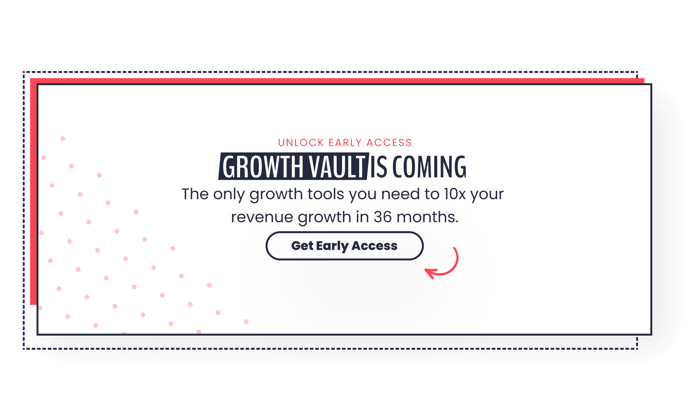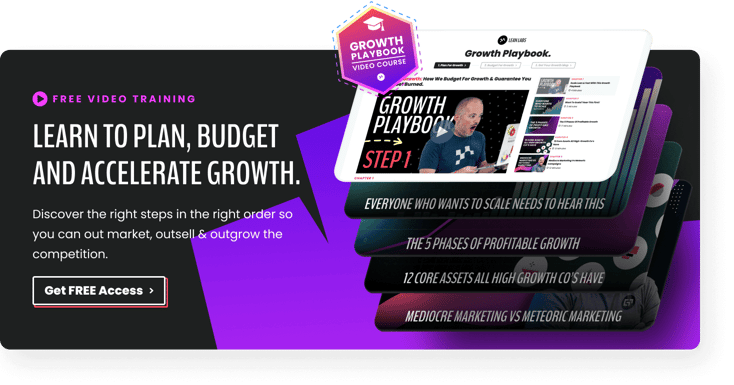You can spend hours trying to find the right ones for your site, but it doesn't mean they'll help your content rank in the search engine. It does, however, mean you have a better chance of getting there.
With some planning, you can narrow down your options and get your keyword strategy moving in the right direction.
4 Steps to Finding High-Value Keywords
So if keywords are essential to earning the top spot on SERPs, what does it take to find the right ones for your site?
This list breaks down how to find the best keywords and incorporate them into your strategy for optimal ROI.
1. Find the Keywords You're Currently Ranking For
Before looking for new keywords, a good practice is to have an idea of what you already rank for. By knowing, you're able to save time, instead of trying to fight against yourself for the same keyword. Plus, it feels good to see where you're ahead of the competition.
Seeing what you already rank for also means you're able to target long-tail keywords, knowing you've secured a spot on the SERP with the main phrase. Rather than attempting another page for "running socks," you can now target long-tails like "breathable running socks" or "black running socks." This can make a huge difference in the amount of content you rank with.
Moz, SEMrush, and Ahrefs offer keyword research tools where you can find what your URL is currently ranking for with different content. You can even see competitors, to get an idea of how they're doing with the same keywords.
While not pivotal to the process of finding new keywords, knowing what you rank for is necessary to save you time and help narrow the rest of your strategy.
2. Research Keywords
The first step in keyword research is to brainstorm all the terms you want to use to rank your content. This list should be fully inclusive. The next step involves pulling data on each keyword, and you may be surprised by how much volume a term you wouldn't normally attempt can have.
With the same tools above, you can conduct your keyword research on new targets. This involves using the keyword suggestion feature to get an idea of what terms have high search volume and click potential.
A good practice is to use the terminology your consumers do, though it requires you to have detailed buyer personas, since phrasing may shift depending on the target audience. For instance, wanting to attempt "self-contained underwater breathing apparatus" isn't as useful as targeting "SCUBA." Of course, this can change if your audience is made of professional divers who are looking for specific equipment.
Let the customer define the keywords.
After you've created an initial list, finding long-tail keywords takes little time. Posture the phrases as a customer would type it into a search engine. "Furniture" becomes "antique furniture restoration" or "furniture for family rooms."
As you continue building this list, ensure the search volume of your long-tails is still worth your time. Their monthly volume will be significantly lower than the original keyword, but that's because they're coming from a more narrow audience which means the difficulty should be lower as well. So long as you're fine creating content for a limited search number a month, you're good.
3. Complete a Competitive Analysis
Next comes the competitive analysis. This involves rank ordering the keywords you found earlier, first by volume, then by difficulty.
We recommend Moz for finding the difficulty.
As you can see from the example above, the difficulty score is usually rated from 0 to 100. The higher the score, the more difficult it is to rank based on the current competition. If your page has higher domain authority, you have better potential for ranking with more difficult terms.
First, create a spreadsheet that lines up all your keywords. In the next column, you'll input the monthly search volume, and in the last, you'll add their difficulty score. Using the filter feature in your spreadsheet application, you can now order the terms by volume, then by difficulty, giving you a list that looks something like this:
.jpg?width=798&height=156&name=antique%20furniture%20seo%20volume%20(1).jpg)
Once you have this list, your keyword research is mostly complete. Depending on the next step, however, you may need to come back to find additional terms.
4. Choose Your Topic Clusters
Topic clusters are the answer to Google's changing algorithm. Rather than looking purely for keywords, Google ranks content based on search intent. Because of this, the topic of your content is far more critical now than it was before.
Because building topic clusters is an article in itself, we recommend you read our Ultimate Guide to Using Topic Clusters.
What you need to know for your keywords is that they need to be group under a specific cluster to prosper. This means your keywords need to fit into a particular theme.
So if one of your clusters is on "antique furniture," the keywords would be all those related to it, such as "antique furniture restoration," "where to find antique furniture," or "is antique furniture worth it." Keywords can also vary, so long as the topic remains constant. This means "old furniture" and "how to clean old rocking chairs" can also fit.
Once you have them assigned, you can start creating titles with the keywords, ensuring they all link back to your pillar content.
What's Next: Create Valuable Content
Having strong keywords isn't enough. You need valuable content that gets people wanting to read your articles. If you're focused on customer-centric marketing, you're already on the right path to creating relevant content for your audience.
Be thorough with your planning and research. While it's not unheard of to add keywords or change your plan, it can be costly to switch entire clusters. Give your keywords time to age through evergreen content, and you'll be surprised at how well your page rankings increase.
If you want more ideas on how to increase organic traffic, check out our free eBook, The Ultimate Guide to Increasing Organic Website Traffic. In it, we cover how to optimize and promote content, market video, conduct The Fresh Test, a so much more.



.jpg?width=1449&height=205&name=antique%20furniture%20seo%20(1).jpg)

.jpg?width=798&height=156&name=antique%20furniture%20seo%20volume%20(1).jpg)





